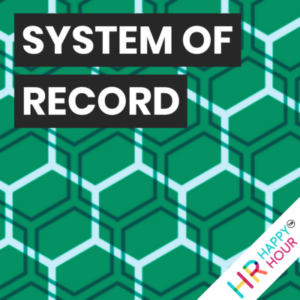Workers Being Managed by Algorithms is Nothing New: Refrigerated Warehouse Example
August 13, 2024
Recently, a piece on Fast Company titled “Algorithms Control Workers, here is One Example How” caught my attention, as I was interested in some of the latest examples of how advanced technology is impacting work and workplaces. The piece detailed how one particular online platform, named Talent Finder, aimed at connecting freelance workers with project opportunities, set its terms and conditions such that it resulted in somewhat unfavorable contracts for many of the freelancers on the site.
While the specifics of the story about Talent Finder were interesting, what I took away from the piece more broadly was that the notion of “algorithms” managing work is really not that new at all, in fact it has been happening for decades in many jobs and industries. How do I know that to be the case?
Well, I’ll share a little story about my first encounter with an “algorithmic” management system, although at the time I am pretty sure we did not use the precise term algorithm, it was effectively that. And it certainly wasn’t AI, as that was not even a thing 35 or so years ago, but again, the specific terms shouldn’t and typically don’t matter to workers subject to management by whatever form of technology we’re discussing.
Ok, with that said, here is the story:
When I was attending college I’d always have to work jobs during the summer breaks to earn and save up spending money for when I was at school – as my preferred college experience did not include working while I was otherwise occupied going to class, playing intramural sports, and quite frankly trying to enjoy the heck out of the college lifestyle. I think it was the summer between sophomore and junior year when I landed a job working as an order selector in a large food and beverage distribution warehouse – third shift no less. Oh, and the main products distributed by this company were meats, cheeses, and juices – so the entire warehouse was essentially one massive refrigerator that was cooled to something like 37 degrees Fahrenheit.
The job was simple, if kind of physical. Using a battery powered pallet jack, I’d gather up the products from all over the warehouse that were needed to fulfill a customer order, stack them all neatly (so they would not fall over during delivery), and set them up at a designated location in the warehouse for loading onto a delivery truck. Each order would be something like 30 – 60 items or so, and once you dropped off a completed order at the loading dock, then you’d return to the central office to pick up the next order and repeat the process all over again until the end of the shift.
Where the “algorithmic” part comes in is that when you started an order you would swipe your employee badge in a kind of a time clock system, and then type in the order number you were assigned. The “system” calculated what the expected length of time in minutes (the “standard”), it should take to review the order, drive all over the warehouse finding and stacking the items in the order, delivering the order to the correct loading dock, and finally returning to the office to “complete” the order by swiping the badge again at the time clock device. Once completed, the time clock would display four items – the actual time it took to complete the order, the “standard” or expected time to complete the order, the difference between actual vs. Standard, and the percentage of standard attained.
So, for example if you started an order at 1:30AM and completed it at 2:12 AM, and the standard for the order was 37 minutes this is what you’d see when you swiped “complete” on the order:
Actual: 42 minutes
Standard: 37 minutes
Difference: – 5 (it would be a negative number since it took longer to complete than what was expected)
Percent of Standard: 88%. Since I took those 5 extra minutes, my performance was below standard, which would calculate out at 100% if I had taken exactly 37 minutes to complete the order. It was possible to be better than standard, if you completed an order faster than the expected amount of time, but in practice, at least for me, that did not happen very often.
And as I mentioned, once an order was completed, you would grab the next one and start the process all over again. You would get “time out” for breaks and lunch, but the system would also track “down time”, i.e. anytime during your active shift where you were not clocked in on an active order. In a typical 8-hour shift, that would probably add up to about 15 or 20 minutes or so.
Why all of that matters is because your overall evaluation and both your compensation and ability to keep your job depended on achieving certain levels of performance against the Standard. Every order you selected was measured against the Standard, and your weekly performance was compiled and measured. And if you fell short of your assigned goals, and for summer workers like me, the goal was only 80% of standard, you could get reprimanded, placed on probation, (where you were given one week to get back to your goal percentage), or even terminated at the end of the week.
For the regular full-time staff, they were tracked the same way, and they did have to maintain performance at or above 100% of standard. If they dipped below 100% for long enough, no matter what the reason, they would end up being terminated. The only meaningful performance and employment metric was attainment of the goal or standard, that was calculated, measured, and reported by an algorithm. Nothing else mattered. And this was happening at this specific employer in the late 1980s.
So, seeing the recent Fast Company piece about algorithms managing workers naturally made me think about that long-ago job in the refrigerated warehouse, on the third shift, racing from aisle to aisle trying to stay one step ahead of the standard set by the algorithm. Being tracked, managed, measured and held accountable to the machine is a fact of life in many jobs and has been for a long time – especially for jobs on the front line of work.
Maybe some of the recent attention and backlash about algorithmic management and worker monitoring is more because advances in AI and other technologies like digital monitoring tools are now allowing the algorithms to work their way into more professional and technical kinds of work. Maybe it is because tools like Generative AI with its ability to create text, images, video, graphics and more are becoming more of a threat to many professional occupations and because of that it is getting more attention. But regardless of that, having to answer to the machine has been a difficult and challenging part of work for a long time and for those of us who spent time stacking cases of orange juice at 3:15 in the morning it seems like what comes around goes around.

Author
Categories
Tags
Share
How we can help
Led by Trish Steed and Steve Boese, H3 HR Advisors harnesses over 40 years of experience to delivery HCM insights and guidance to global organizations.
H3 HR Advisory services
By leveraging technology, analytics, and our deep industry knowledge we can help you to reposition your workforce and ensure that you have the right people with the right capabilities in the right roles to positively impact the growth of your business.
HR Happy Hour Podcast Network
Created in 2009, The HR Happy Hour Show is hosted by Steve Boese and Trish Steed and is the longest continuously running internet radio show and podcast on Human Resources, HR Technology, Talent Practices, Workplace and Leadership topics.
H3 HR Speaking Services
We work closely with every client to customize your content - keynotes, webinars, research, infographics, and buyer’s guides - to inspire, educate and inform the audience enabling you to reset and realign your organization for a talent-led breakthrough.
Get in touch
Talk to us today and find out how we can help you and your organization leverage HCM technology to attract, onboard, retain and manage top talent.



